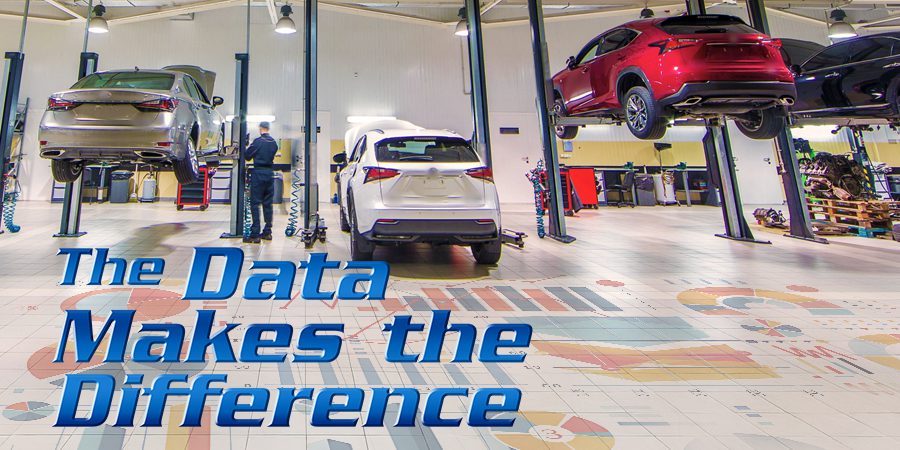Project planning and execution, the topic of my program at ATRA’s Powertrain Expo, is one of my favorite subjects. And while the process is relatively simple on its face, projects often look far different once executed compared to their original intent. If you think that’s a loose statement, consider this: Every terrible website you’ve ever seen was authorized and approved by “someone.” I’m not talking about minor problems or inconveniences but a virtually nonfunctional site. If you’ve ever been frustrated with a store’s return policy or getting help over the phone through a government agency, then you’ve suffered the aftereffects of a poorly planned and executed project.
Now, in fairness and full disclosure, I’ve overseen projects that blew up in my face and failed miserably. And after each of these blunders, I knew why they failed and where I had fallen short. Let’s look at some common project failures, and how to prevent them.
First, let’s define what a project is. A project is a series of tasks to attain a certain outcome. The key word here is outcome. You must have absolute clarity in the outcome you’re after. Not a general idea of certain improvements you’d like to achieve but a clear idea of what you want to attain. Things like, I’d like more business and profit, we have too many CBs or my techs need better training, won’t do. The subject must be measurable. How much more business or profit? This means you must know the numbers as they currently are and what you want to attain. And even this is a poor project because you may not know why business and profit are down. Doing more of something poorly won’t improve the results. If you have too many CBs, you must know your CB rate and why they occur. You might be surprised to learn that it’s not so much a problem with your techs (who you think need better training) but your process, which interferes with and disrupts their work. At any rate, you must have an outcome you can measure, or it’s just a whim and a wish. It’s just your opinion at work. Opinion always has the answer, so it doesn’t ask the right questions or collect data. Opinion over data will always result in failure.
The second keyword in the definition of “project” is “tasks.” I won’t go too far with this because the tasks are project-specific. And while tasks are specific, one thing common to all tasks is that they’re usually performed by people who don’t know why you’re in business: your employees. That’s right. The people performing the tasks for your next important project likely don’t know why you’re in business. Or worse, they misunderstand why you’re in business and apply their own reasons. Now, is it any wonder why many projects fail or underperform?
I figured this out the hard way. About 20 years ago, I decided to work on creating a mission statement for ATRA. I had read so much about the importance of having the team on the same page and the necessary components of a statement to get it right. It was so important that I hired a consultant to guide the project.
A half dozen or so employees and some of the ATRA Board worked on it. We followed the consultant’s lead, and after two or three days, we had a five-paragraph statement. We were so proud. I had the new mission statement printed and framed, where it hung prominently at the entrance of the building. Everyone saw it as they entered the building to begin their workday. If you’ve ever worked on a mission statement, then you might relate to the story.
We had regular company meetings, and about a year after the project, we all assembled for what seemed like a typical meeting. Somewhere during the meeting, Rodger Bland, the Managing Editor of Gears, stood up with a $100 bill in his hand. He said, “I’ll give anyone here a hundred bucks if they can cite one sentence of our Mission statement.” There were no takers, including me.
It was a deep blow, and I struggled with where I had gone wrong. I had researched the “whys and hows” of creating a mission statement, even hiring a consultant, yet it was a glaring failure. The statement came down from the wall that afternoon. Strike this up as a project failure.
Weeks later, I tried something different. I went to each person at work and asked them to describe the purpose of ATRA. What do we do, and why do we exist? To a person, they described their tasks and the services ATRA provides. That’s when it hit me. Tasks do not define purpose! This is true for you, too. Rebuilding transmissions isn’t a purpose. It’s a task.
Over the next couple of weeks, we came up with a simple statement, “The purpose of ATRA is to help members get customers and then help them fix their cars so they can get paid.” Later, we shortened it to, “Get ‘em in the door, Get ‘em out the door.” It meant that every service or program we worked on should either help ATRA members reach new customers or help them get cars fixed. It seems obvious, but it’s easy to get sidetracked unless you state it out loud.
OK, back to you and your business. Before you begin a project, ask your team why you’re in business. Don’t skip this part. Thinking you already know their thoughts about why you are in business is a big mistake. If your team isn’t clear on the vision and purpose of your business, they’ll use theirs. This isn’t a criticism, per se; it’s just how it works. Everybody operates from a worldview or some level of why they do what they do.
So, make sure you have a statement of why you’re in business before trying to work on any meaningful projects. Do this yourself, without any help from your staff. This, too, is important. You may think this is heavy-handed or some exclusionary act, but only YOU can accurately state why you’re in business.
Let me help with an example: We know from surveys that people think it should take two to three days to get their car back after having the transmission replaced (rebuilt or reman doesn’t matter). So time without their car is important (Whether two or three days is reasonable is a different story).
Something else we know is that cheap repair is less important than a good repair. It may not always seem like it because price might be the only thing they know what to ask. I’ll add that many of the busiest and most profitable shops I’ve visited over the years were not discount shops.
With these two ideas, you can use a statement like, “At CJ’s Transmissions, we get the customer back on the road as quickly as possible without unnecessary expense.” It’s a simple statement that addresses two big customer concerns: getting their car back quickly and being reasonable with the cost (not including a bunch of add-ons to get the invoice higher). It’s not necessary to publicize this to your customer. If you want to make something more elaborate, then do that. The key is that your staff know this. They know that getting the car fixed in a timely manner is more important than making a few extra bucks. A reman might be in order if getting the parts takes a week or so. They also know that value is important and might change their customer repair options.
Here’s another. Perhaps you work on the entire car and make it clear to your customer that “United Car Care is the only place people need for auto repair.” You want your employees to inspect everything on the car so a problem isn’t discovered at another shop. Whatever it is, you have it covered. Here, getting the car repaired and back to the customer quickly is less of an objective than being thorough (more repair items per car). In this case, you might have a statement: “At United, we keep our customers’ cars running like new, and we take the time to do so.”
Now, take a moment to consider how the employees at the two shops operate and behave each day. It’s entirely different. Then imagine that the staff for each shop swapped places for a week. The CJ’s employees are working at United and vice versa. They’d be lost. Moreover, the shop owners would have a different view of their performance. Then consider the marketing approach of the two shops. CJ’s relies more heavily on referrals for new customers than United because they only see customers with a transmission failure. United, on the other hand, have repeat customers and they’re likely to send out service reminders based on time or anticipated mileage.
These are just two shop examples, but you can see how having a clear understanding of the business purpose matters to everyone, employees and customers alike. Before we get into project development, take some time to write down the reasons you’re in business. Keep it simple so you can convey it to your team. Once you finish this exercise, you can define your next project. We’ll work on that in part two.
Author note: Make sure you check the video with the online version of this article. Go to gearsmagazine.com and look for the “Gears Overdrive” link.
















